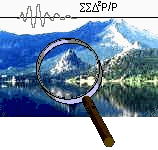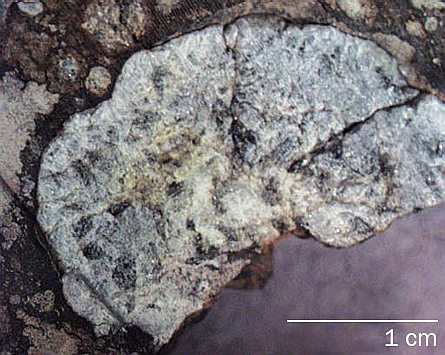
|
Профессиональный научный форум физиков посвященый проблемам физики эфира,
астрофизике, геофизике, климатологии, экологии, прогнозу землетрясений,
проблемам развития физической науки в современном обществе
|
| | Автор | |
|---|
Александр_Степанов
инженер-автоматик

   
|
| Написано: 22.02.2010 в 23:12:17 | #11 |
| И ещё одна просьба... Карим Аменович, если можно, то выделите мне время на "оперативную" переписку с Вами на этом форуме... Может быть, в чём-то я и прав. | | | | КузимечевАлександрИванович
участник форума

   
|
| Написано: 29.03.2010 в 13:48:20 | #12 |
Цитата:| Кстати спутники Марса так же фрагменты внешней оболочки Фаэтона... |
Извините что вмешиваюсь в мирную беседу, но случай с Фобосом немного на мой взгляд не продуманная схема. Фобос своим обликом и ударным кратером, который, кстати дает некоторые логические размышления. Похоже что астероид проткнувший Фобос сдеформировал тело Фобоса вытянув его в яйцеобразную форму, а это могло произойти только с расплавленным сердечником. И как мне показалось одновременно Фобос был протаранен мелкой шрапнелью. И что интересно кометы мелкого достоинства таранившие Фобос оставляли борозды на теле Фобоса и все они шли в одном направлении Да и крупный астероид прилетел с той же стороны. А внутри большого кратера так же зафиксирован кратер, который, как мне кажется последовал в не значительном интервале за крупным астероидом. Потом. Мое ощущение что кратер отпечатался именно в базальтовой будучи в то время расплавленной породе.
В остальном думаю необходимо долго и кропотливо разбираться, и хочу заметить сто сбрасывать со счетов древние мифы думаю не стоит. Возможно их писали люди не обладающие точными данными, но тем не менее их свидетельские показания могут быть более достоверны чем Шмидтовские предположения.
| | | | Карим_Хайдаров
канд.техн.наук, администратор

   
|
| Написано: 24.08.2010 в 16:36:04 | #13 |
на сайте http://www.sciencenews.org/view/generic/id/62481/title/Solar_system_older_than_estimated как и на многих других сайтах планеты массово вброшена, а значит, организована управляющей СМИ-закулисой реклама исследования американских "космохимиков" о том, что возраст Земли и Солнечной системы якобы уточнен до 2 млн лет:
Solar system older than estimated
Meteorite age suggests planets began to form earlier than thought
By Gwyneth Dickey
Web edition : Monday, August 23rd, 2010
A pocket of calcium- and aluminum-rich material (light area) in a meteorite may be the remains of some of the first solids that formed in the solar system. The rock puts the age of the solar system up to 1.9 million years older than previously estimated.
A. Bouvier and M. Wadhwa/Nature 2010

WHAT’S IN YOUR POCKET?A pocket of calcium- and aluminum-rich material (light area) in a meteorite may be the remains of some of the first solids that formed in the solar system. The rock puts the age of the solar system up to 1.9 million years older than previously estimated.
A. Bouvier and M. Wadhwa/Nature 2010
The solar system may be almost 2 million years older than previously thought, a new study shows.
Data from a newly studied meteorite recovered from the Saharan Desert show that the solar system formed 4,568.2 million years ago, 0.3 million to 1.9 million years earlier than other estimates. The results were published online August 22 in Nature Geoscience.
“All the interesting things we want to understand about the chemistry of our solar system happened within the first five to 10 million years,” says study coauthor Meenakshi Wadhwa, a cosmochemist from Arizona State University in Tempe. “When you push it back by 2 million years, that’s a substantial proportion of that 5 to 10 million years.”
The meteorite contains millimeter- and centimeter-sized bits of calcium- and aluminum-rich substances, some of the oldest material ever found in primordial rocks. These pockets in the rock, called inclusions, are believed to be among the first solids that condensed from gas at the beginning of the solar system’s formation. Along with other materials in the presolar cloud, the inclusions snowballed into larger objects, eventually forming asteroids and planets.
Study coauthor Audrey Bouvier of Arizona State measured the ratios of variants of lead atoms produced by the radioactive decay of uranium present when the inclusions formed. Since uranium decays at a known rate, current amounts of lead forms, or isotopes, allow scientists to calculate how long ago the space dust formed. Two meteorites previously analyzed for their lead-isotope ratio suggested the first solar system solids formed 4,567.1 million to 4,567.6 million years ago. But these ages were inconsistent with other radioactive "clocks" in the same rocks, such as one based on the decay of an aluminum isotope to magnesium.
The uranium-lead decay age is consistent with other clocks in the new meteorite. The rock probably went through less heating and bombardment when it was part of an asteroid than the previously studied meteorites did, the authors say, so it experienced less chemical change.
The softball-sized meteorite was found in Morocco in 2004 and weighs a little over three pounds.
“It’s like crime-scene investigation four and a half billion years after the scene is vacated,” says astrophysicist Alan Boss of the Carnegie Institution for Science in Washington, D.C. “We’re coming toward more of a cohesive picture of how things happened.”
Comments:
Well It is nice to know that all the meteroids just didn't form at the same time. How can you be sure that the earth formed at the same time? If The earth did form from meteroids like these could some had been even older or younger? The inculsions formed at that age so the rock has to be younger? "are believed to be among the first solids that condensed from gas at the beginning of the solar system’s formation. " What do you need to change this belief into a fact? Did they condense out of the solar nebula or the dust cloud in the birthing stellar nebula?
John Zilka
Aug. 23, 2010 at 6:41pm
You are right, dear John,
this is only the age of last solidifying of given sample.
This numeral is not a proof of age of Solar system, but only floor limit of its age.
Indeed Solar system has the age many trillion years.
4,567.6 million years ago due to collision with other celestial body the solar flash has occurred in the manner of "nova", which radiation has melted the surface of Earth.
For more detailed information please see paper "Origin of the Sun and Planets" http://bourabai.kz/solar-e.htm
Karim Khaidarov
Перевод моего комментария вот:
Вы правы, дорогой Джон,
это всего лишь возраст последнего затвердевания данного образца.
Эта цифра не есть доказательство возраста Солнечной системы, но лишь нижнего предела возраста.
На самом деле Солнечная система имеет возраст много триллионов лет.
А 4568 млн лет назад произошла вспышка Солнца в виде "новой", излучение которой расплавило поверхность Земли.
Для интересующихcя подробностями даю ссылку на статью "Происхождение Солнца и планет" http://bourabai.kz/solar.htm
Ссылки там, правда, сразу удаляются, поэтому и комментировать особого смысла нет...
| ---------
Истинное знание есть знание причин - Френсис Бэкон | | | | Карим_Хайдаров
канд.техн.наук, администратор

   
|
| Написано: 01.09.2010 в 15:34:58 | #14 |
Еще один мой комментарий - объяснение там же в продолжение дискуссии.
Цитата:
If I'm not mistaken, isn't the solar system approximately 4.5 billion years old(not million). And as far as Karim's comment about the solar system being trillions of years old, isn't the entire universe only about 14 billion years old
MikeP
Aug. 27, 2010 at 4:53pm |
Dear MikeP!
Unfortunately, the age of the solar system approximately 4.5 billion years old is a myth only.
I has explained it above. Really the rock solidation 4.5 billion years ago is an acknowledgement of great catastrophe, which is happened with Sun amd its planets. That catastrophe is the solar nucleus explosion
caused by collision with other celestial body. Its description is in my paper on my site bourabai
"Origin of the Sun and Planets"
Secondly, the age of Universe about 14 billion years is a myth too.
Astronomers see many objects within Universe, which ages exceed 14 billion years in many times (orders).
For example, the Great Attractor, the concourse of myriad of galactics formed huge gravitational system requiring for its formig many trillion years.
To tell true, the fight around age of universe is arisen and conducted by followers of relaticistic view in physics.
If we will agree with longer age of Universe, we must agree with invalidity of Einstein theory.
For detailed information, please see my papers "The Eternal Universe", "Stellar Evolution", "Galactic Evolution".
Karim Khaidarov
Sep. 1, 2010 at 5:17am
| ---------
Истинное знание есть знание причин - Френсис Бэкон | | | | Карим_Хайдаров
канд.техн.наук, администратор

   
|
| Написано: 01.09.2010 в 15:36:12 | #15 |
Почти на ту же тему там же статья об обнаружении экзопланет и мой комментарий.
http://www.sciencenews.org/view/generic/id/62850#comment_62883
Still no Earths, but getting closer
Two newly discovered planetary systems shed light on odds of forming terrestrial planets
By Ron Cowen
Web edition : Tuesday, August 31st, 2010
Comment:
The forming and stability of planetary systems, the calculation of its parameters were described in my paper "The Aethereal Wind" on Bourabai Research site.
Offered approach gives tools for determine planetary systems parameters (mass, orbital radii) before astronomic finding of exoplanets.
Karim Khaidarov
Sep. 1, 2010 at 5:28am | ---------
Истинное знание есть знание причин - Френсис Бэкон | | | |
Администратор запретил гостям оставлять сообщения!
Зарегистрироваться
|




























